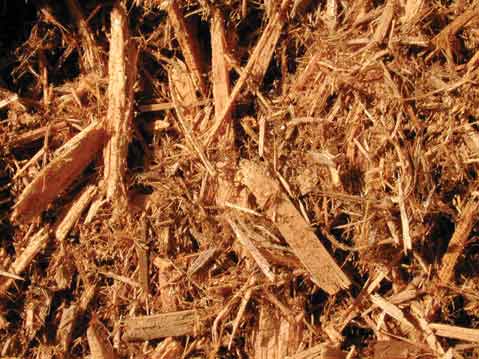Wintertime Mulching
Mulch Can Help with Erosion and Other Rainy Weather Issues

It may seem oxymoronic to be advocating that gardeners look to their mulching in the middle of one of the wettest winters on record. Isn’t one of mulch’s most touted attributes that of conserving water? Yes, but there are other good reasons, too.
In such a wet winter, a good thick layer of mulch can help with one of the unfortunate consequences of all this blessed rainfall—erosion. Mulch forms a web of organic material, partly held together by bacterial and fungal colonies whose attachments may be microscopic, but effective. Gullies may still wash, but well-graded and mulched landscapes will escape more damage than those that aren’t.
Another feature of mulch is its ability to cushion the underlying soil from compaction. Several inches of rain in as many hours means that all that water is coming down fast and hard. On bare earth, it can have a real impact on the soil structure. This is also a reason to stay out of the planting beds when they are saturated unless absolutely necessary. Winter chores that can’t wait should be done from a plank or other rigid material that can spread the weight over a larger area. So, follow these general rules and keep on mulching.
Choose the kind of mulching material to correspond to the type of plant it is surrounding. Coarse woody mulches such as wood chips are best used around larger trees and shrubs. Lighter shredded material such as that available from the county green-waste recycling program is fine for just about anything with the possible exception of seed beds, where you want the tiny seedlings to have an easier time of it. Finer mulches, either screened fine from other types of mulch or nicely finished compost, are perfect to top dress ornamental beds such as roses and perennials or spread on newly seeded beds and lawns.
Don’t pile mulch right up against the trunks of plants, especially trees and other woody shrubs. The mulch can interfere with the health of the bark of these plants, leading to an increased susceptibility to pathogenic fungi and bacteria. Keep a zone about three inches out from the trunk nearly bare; a smattering of finer mulch is okay.
Organic is not the only way to go. Sometimes, a top-dressing of decorative stone can be what’s called for in a design. Shale, slate chips, lava clinkers, and glass slag are just a few that have found their way into the garden of late. These mineral mulches provide all the same functions of water retention and weed suppression as an organic mulch, and some can even aid in helping to retain heat in the soil, as well.
Unfortunately, mineral mulches may be more prone to erosion, but a few strategically placed sandbags on sloping beds or paths can be a helpful temporary fix. These mulches don’t contribute to the soil food web, but there are some ways to circumvent that in the use of compost tea. Compost tea is a concoction that contains millions of microbes per ounce extracted from good compost. These organisms will munch and be munched in the soil below the inactive mulch, doing the job that normally would result from the recycling of organic mulch materials.
This winter’s mantra: Stay dry, keep on mulching.



